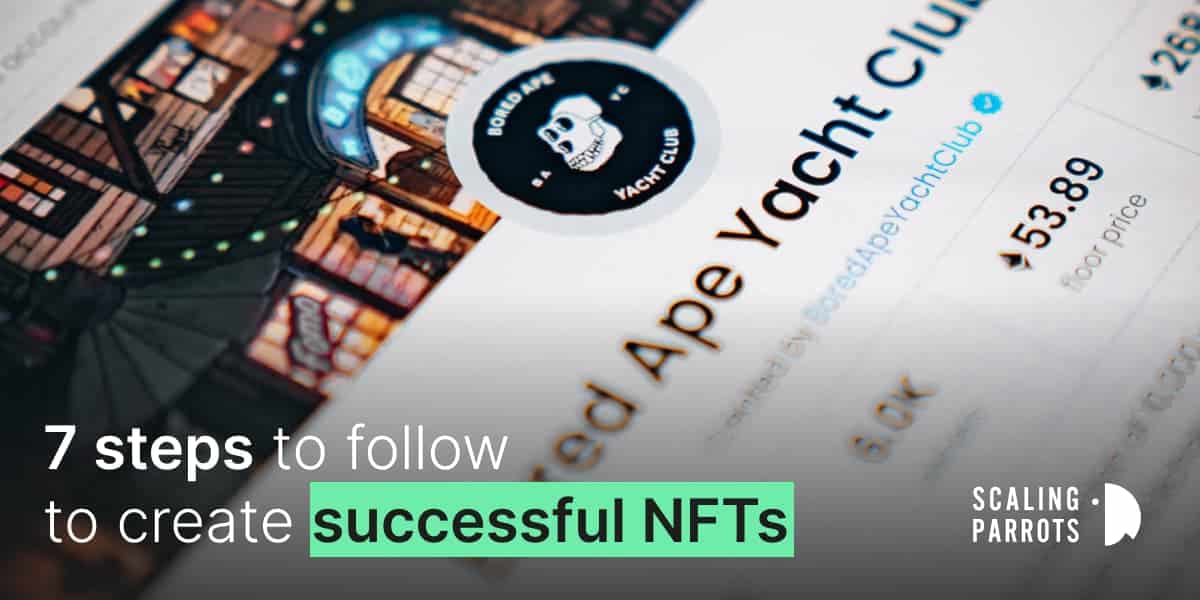
In this article we will explain, using the technical and strategic skills of our Blockchain software house, how to set up a successful NFT project. We will first list the basic criteria for a winning strategy and then close with a concrete example of a project we developed.
Although they have been around for several years now, the world began to hear about NFTs only in 2021. The timeframe from then to the present has marked a full-scale mass cultural phenomenon. Along with it a speculative bubble followed, raising the value of Non-Fungible-Tokens to reckless levels and then gradually deflating.
Of course, we at Scaling Parrots, as Blockchain consultants and developers, are aware of the value of NFTs, as long as the related projects are solid and well-architected. If we look at the total amount of collections on OpenSea, for example, we can see that only a modest part of them reflects the basic requirements to be considered successful NFT projects.
The Gaussian curve is a notion that well expresses the current state of NFTs (as well as the upcoming state): in a bell curve, successful projects are distributed in the “tail” of the graph. The early part corresponds to projects that failed at the start, while the middle part corresponds to projects that constitute the average. It is important to emphasize that belonging to the average is not a way to go: to flourish, it is necessary to aim for the elite.
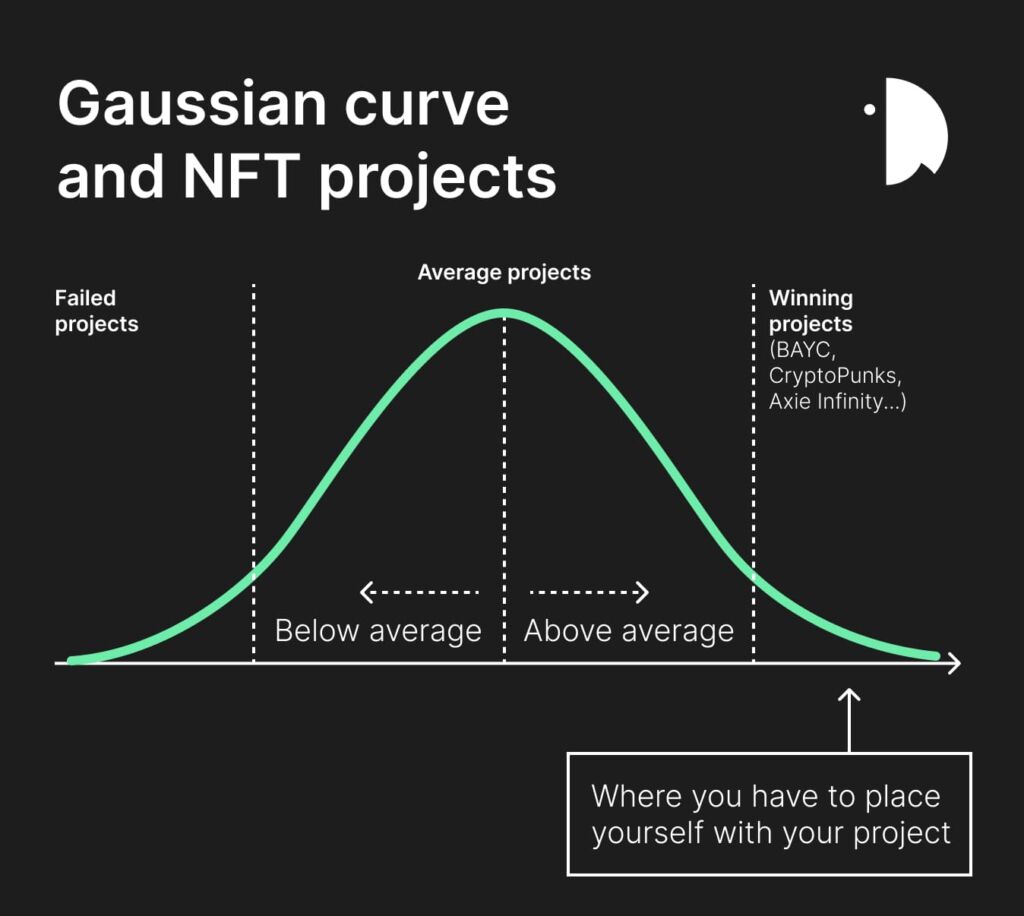
It is also true that Bored Ape Yacht Club and CryptoPunks are exceptions and should be considered as such. To achieve success for these Yuga Labs-owned collections, it has become a minimum requirement that they meet certain quality criteria, which we will list for you in the next few paragraphs.
The 7 steps to set up a successful NFT project
What are the criteria to set up a successful NFT? Are there requirements to be met? Let’s look together at the steps you will need to follow to increase your chances of success.
Read also: 10 examples of successful NFTs that make money
1. Build a formidable team with cross skills
The first step is by far to build a reliable team. There are few (if any) cases where a few people follow the entire process of strategic planning, art creation, technology development, and project sponsorship. Even fewer are the cases in which the team stays together over the long term. That is why the reliability of the people who are part of the project is everything: you must ensure that those people will stay by your side, especially in the (physiological) period of the motivational breakdown.
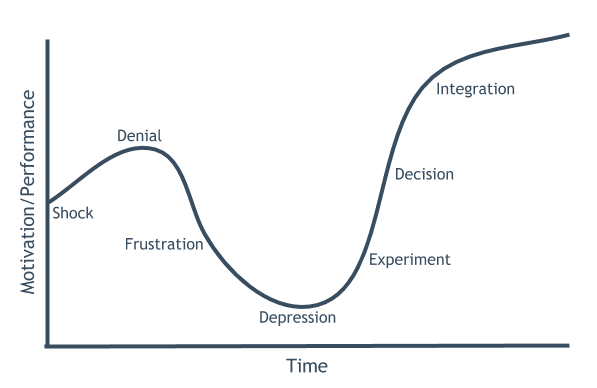
In terms of skills, make sure that each skill listed below is covered by your work team members:
- Graphic / Visual design
- Backend and frontend development
- Paid and unpaid marketing
- Social communication on multiple platforms
- Community management on multiple networks
- Financial knowledge, especially of the crypto world and tokenomics
- General strategy to coordinate the work
To be clear, not necessarily every ability has to match a person, quite the contrary. A team with members having “hybrid” skills is the right card for working with versatility and cutting costs.
2. Define a utility for your project
The second crucial element is undoubtedly to find a purpose for your project. Most projects fail because there was no defined purpose for which investors should invest in their NFTs from the beginning. When defining the utility ask yourself, “Why do I use Spotify?” or “Why do I own a Playstation 5?” People use services and products because they receive a tangible benefit in return. Making art is not enough. Unless you are an artist, but then that’s a different situation.
But what can be the utility of an NFT project? We list several examples:
- Axie Infinity is a video game. Those who buy its NFTs do so for a playful purpose, as well as for investment (since it falls under the Play-To-Earn domain).
- Bored Ape Yacht Club is a project that blends art and community. Those who own a Bored Ape feel part of an exclusive ecosystem, as well as recognize in the illustrations of bored monkeys some digital art, showing it off as much as possible.
- VeeFriends allows owners of its NFTs to attend lectures by Gary Vaynerchuk, a well-known U.S. entrepreneur.
Utility can also be represented by the definition of a tokenomics or DAO, which are decentralized ecosystems that supply different benefits.
3. Choose the most suitable Blockchain
Having set the design basis, it is time to define the Blockchain on which the project will be hosted. It may seem like a trivial choice, but each chain has features for which a project may or may not find fertile ground. We list below some of the most widely used blockchains in the NFT world.
- Ethereum: The Blockchain where the NFT phenomenon was born and exploded. This chain lends itself to projects with big daily trading volumes and high values per NFT (from $1,000 upwards. The reason is related to so-called gas fees, fees that must be paid for each purchase or sale of a non-fungible token. They are generally high due to “congestion” on the Blockchain. Trading NFTs on Ethereum only pays off when the “NFT price:gas fee” ratio is 10:1. On the positive side, this chain’s community is by far the most solid because of the chain’s longevity.
- Solana: The Solana Blockchain has an extremely high speed (thousands of transactions per second) that has enabled it to become the alternative ecosystem to Ethereum. The reason for this is the low fees per transaction (a few cents on the dollar), which allow investors “strong” NFT trading on “low budget” economic value collections. Solana lends itself excellently to Play-To-Earn games, but a fair share of the crypto world recriminates this Blockchain with too much centralization, strong technological instability, as well as the fact that it is not EVM compatible.
- Polygon: An Ethereum layer 2 blockchain. It is a suitable alternative to Ethereum for those who wish to launch their own NFT project without giving up EVM compatibility and finding the right compromise on the price of gas fees (from a few tens of cents to a few euros per transaction).

In addition to these three top Blockchains there are a vast range of alternatives that we think are fair to mention: Binance Smart Chain, Avalanche and Cardano.
One of the crucial aspects to consider when choosing a Blockchain for your NFT is related to community. Make sure you make a choice that guarantees you a large user base and high daily trading volume. At the same time, take advantage of the power of secondary marketplaces, which provide extreme visibility to all projects on the chains for which they are compatible (the most popular NFT marketplace OpenSea, for example, allows NFT exchange on Ethereum, Solana, Polygon and Klaytn).
What to choose: on-chain or off-chain NFT?
In a dedicated article we talked about the difference between On-chain or Off-chain NFTs. This is a strategic choice that must be made alongside the choice of the Blockchain of the project you intend to bring to life. This is because registering an on-chain token turns out to be an advantage in case you want full decentralization, but you will have to accept the trade-off of higher fees per transaction (as long as you do not choose the SVG format for your graphics). In this regard, we recommend you investigate this further.
4. Give the highest priority to the community
The people who will buy your NFTs should not be “temporary”. Excluding short-term speculators, who find opportunities by analyzing market trends, those who decide to grab your tokens will need to be constantly updated on the roadmap you set. In addition to this, which is an indicator of transparency and reliability, the user will need to feel part of a community. Attachment to a community is a determining factor in the success of a project: on a psychological level, human beings are social animals, tending to join groups with whom they identify with.
For this reason, having a well-maintained updated Twitter channel and Discord server are now a minimum and basic requirement. In addition to these, it is advisable to also have a Telegram account and a magazine/blog within the project’s official website. During the launch phase, big numbers are not crucial. Focus rather on feeding the community with quality content and updates. Do not buy bots to “pump” social network numbers: no one cares about having a fake community, besides the fact that investors recognize and avoid giving their money to non-transparent projects.
5. Get a free consultation from our software house
The fifth step is to ask for help from someone who knows more than you do. To grow and set up a successful NFT project, it is important to be clear about all the creative processes and to implement them in a clear and meticulous way.
Our skills have enabled us to create numerous NFT projects through strategic planning and thorough Blockchain development.
To learn more about your upcoming NFT project, you can request a free, no-obligation consultation with our software house. We will be happy to listen to your ideas and begin (if the prerequisites are there) a collaboration to bring them to the market successfully.
6. Design recognizable art
Utility aside, it is natural that a project using NFTs as assets should have well-curated and recognizable graphics. The mistake many people make here is to follow trends based on the market. Take the Bored Ape as an example: they are prized pieces that could be traded for prices more than $1 million in prosperous market times. As a reflection of these million-dollar transactions, similar collections were (and still are) created: which use the ape as an element of pure speculation.
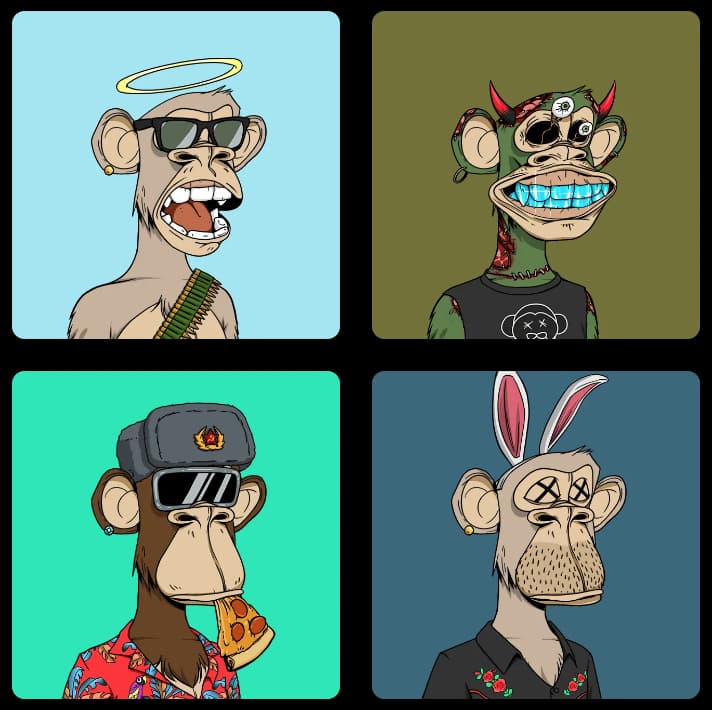
It is like the “fake” market: if I buy a Nike shoe, I am buying a product with a history and identity. If I buy a knockoff, I am buying a commodity that is extremely less valuable, both in terms of the quality of the product and the fact that it is (in fact) not original.
So, the advice for your successful NFT project is to find a representative and unique style. Something that has never been created and is unique. In short…something that will be remembered for years to come.
7. Define a roadmap
Last (but not least) step is to define a roadmap for the NFT project, going to define what will be the path for the evolution of the project.
One of the factors that investors look at before going ahead with their purchase is the roadmap. A realistic and detailed evolution plan is an important display of credibility. Knowing that you have invested in the long term on a collection with predefined steps is not only an element of reassurance, but at the same time an element of professionalism.
The advice in these cases is to plan something realistic. Running out of time with respect to set dates is not the end of the world. The important thing is to give your community the updates it needs concerning the progress of the work. In short, be completely honest.
An example of a successful NFT project developed by us
It is time to talk about us. We are Scaling Parrots, a Blockchain consulting and development company. Since 2018, we have been helping entrepreneurs and managers to improve their business through the implementation of Blockchain.
But we do not only work for others. In fact, we have conducted numerous NFT projects that we are proud of. One example among all is Planet Wars, an NFT game of space wars. To make this game we did our best, involving a big team with cross-disciplinary skills. Not least we followed the very steps we mentioned to you in the previous paragraphs, with incredible results to date.
Our goal is to think on long-term: we are focused on the present, but we are aware of the immense work ahead to make Planet Wars the most important NFT Play-To-Earn in Italy.
Considering this experience we had with the development of Planet Wars, we are confident that we can help you in the realization of your NFT project by applying the same steps we applied on ours.
The 3 principles to follow to set up a successful NFT project
This article is not over yet. It is important to realize a successful NFT project that you have a complete vision of all the design aspects, but especially the business aspects that we list below.
1. Don’t be fooled by speculation related to NFTs
Indeed, it is true that the world of NFT is still incredibly in a “prehistoric” stage. If we compare it to the world of cryptocurrencies, it is even in an earlier step.
There are many opportunities to speculate, and we do not intend to discourage by any means those who choose this path. When we talk about solid NFT projects, however, we are talking about everything except short-term profit. So, the success of your idea is based on the idea itself, not on the profit you can generate from it.
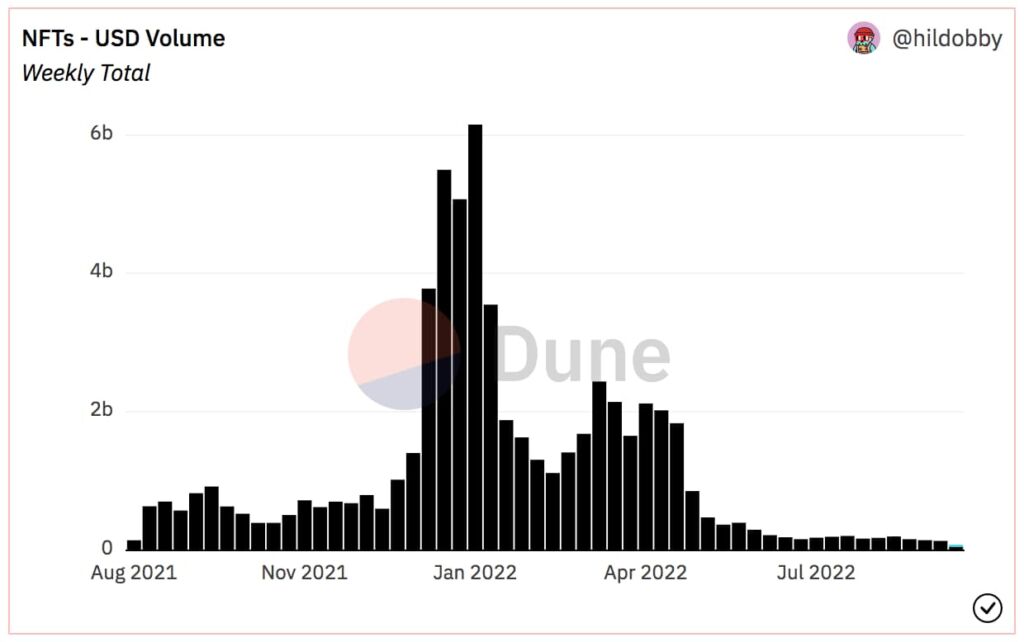
2. Be businesslike in your thinking
An NFT project whose ambition is to be successful cannot be done without obsessive work. The team working on it must work full time, as if it was a business.
Success of the project is proportional to the effort that goes into achieving it. So, if the team work just few hours a week to the project, the results will be poor or zero. It is only when you go all in that results will begin to manifest themselves.
For this reason, therefore, it is essential to think like a real company.
3. Make long-term plans
A misconception that an entrepreneur has following the launch of his or her project is that he or she will get results in a few months, if not a few days. At the basis of this is a disproportionate cognitive BIAS, based on the idea that a project must necessarily get off to a good start from day 1.
If you think like a business, however, history teaches us that the most solid companies (Amazon above all) are those that took years (if not decades) to become the companies they are, accepting the trade-off that at an early stage the results might not be satisfying. The key is to work by thinking over the long term, continuously analyzing the numbers over time and making rational decisions based on the numbers.
How to set up a successful NFT project – Conclusion
Let’s summarize. Setting up a successful NFT project requires:
- Build a formidable team with “cross” skills
- Define a utility
- Choose the right blockchain
- Take care of the community
- Do a free consultation with our Blockchain software house
- Design recognizable art
- Set a roadmap
- Don’t speculate for the fun of it
- Be businesslike in your thinking
- Make long-term plans
That’s all. We are sure that this article has been helpful to you in setting up your project and becoming more aware of everything you need to be successful in this industry.
See you soon,
Scaling Parrots.
